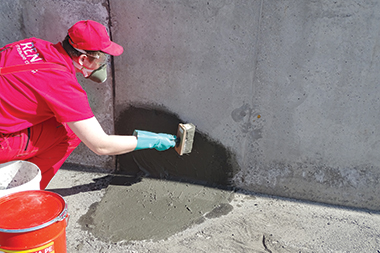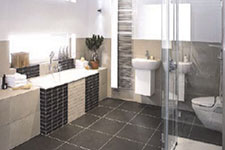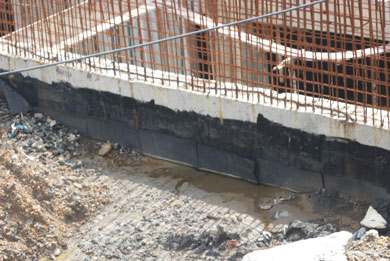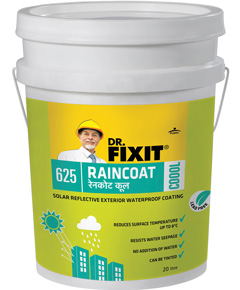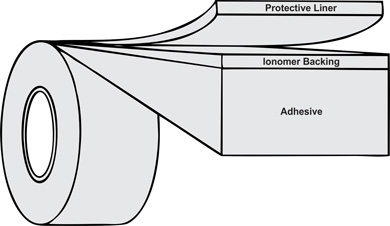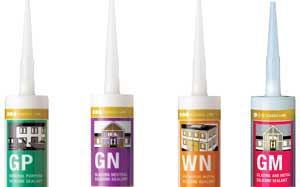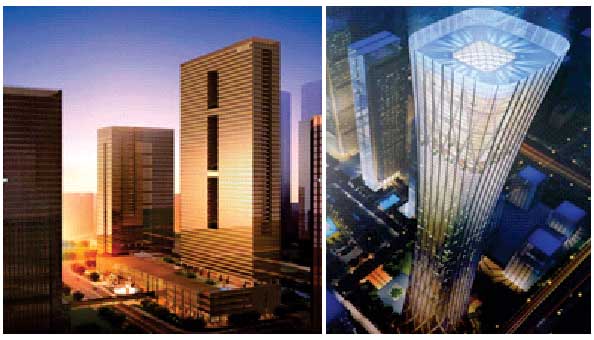
Dr. Sanjay Bahadur, Global CEO, Construction Chemicals Pidilite Industries
In India currently the seasons and their cycles have altered to a great extent. It was not long ago when we experienced heavy rainfall right during the start of March. This sudden rain was followed by high temperature as a result of which the humidity in the air has increased. The excess humidity has not only given rise to deadly disease, but has also affected the concrete structure under. In addition to humidity which is high in the coastal region of the country, the salinity in the soil anyway deteriorates the structure further.
Climatic changes
A number of factors that determine climate include altitude, the proximity of oceanic current, humidity, and rainfall. Fluctuations in the quantity of atmospheric greenhouse gases have led to global warming. The western and southern zone of India, which is surrounded by sea, is known for its humid climate. Since it has close proximity to the ocean, high humidity is one of the concern areas for these regions. These parts of India exhibit a very different pattern of weather conditions which are extreme and unpredictable. Although the temperatures are not excessive, the high humidity causes discomfort.
Construction practices
When it comes to concrete constructions in these zones, saline land, wet and humid climate are two major problems. A major shift of working population towards cities like Mumbai, Chennai, Bangalore and more, has seen a sharp rise in housing demand in this region of the country. As a result of which, fast construction techniques unknowingly compromising on the quality of constructions have come into practice. Factors like production of concrete by volume batching, which is measuring different ingredients of concrete like cement, sand, coarse aggregate and water before mixing it, minimal control of water cement ratio, less number of days given for the concrete to settle, affect the quality of construction and eventually life of the structure. The concrete usually has high porosity. The cracks in the concrete lead to dampness, and the life of such structures is unsurprisingly reduced.
Humidity and concrete
Excess humidity can damage wood, paper and fabric. It also accelerates the rusting of steel. So think of the vulnerability of our building structure with the levels of wet and humid climate they are always exposed to. Peeling of the paint, either inside or outside, cracks are just the beginning of the problem. If a wall is not designed according to the moisture levels in surrounding atmosphere then the concrete absorbs the excess moisture in the wall, eventually causing structural damage.
Concrete expands when moisture increases and contracts when moisture reduces. This swelling and shrinkage due to temperature fluctuations causes the appearance of cracks on the building surfaces and sometimes can even lead to concrete slab collapsing. Many times as concrete ages, the surface is subjected to a lot of wear and tear. These cracks and damages lead to major leakage problems and long term deterioration of the building.
Salinity and concrete
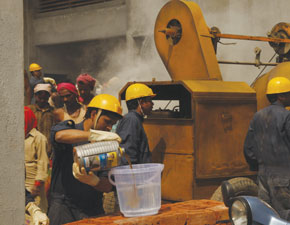
Chemical reactions in concrete result into increase in porosity, decrease in permeability, and cracking. Sulphate attack, alkali-aggregate attack, and corrosion of rooted steel etc due to chemical reactions in concrete are responsible for deterioration of a large number of concrete structures. Concrete structures in coastal and offshore structures are exposed to chemical and physical processes of deterioration.
Take care
Damp proofing and waterproofing makes the structure impermeable to water. In general, concrete’s permeability decreases as its strength increases. Very little water and moisture can seep through a high-strength, dense concrete, but concrete of a low strength that is poorly fused can be quite permeable. Therefore, the first line of defence against water problems is the use of high quality concrete mixtures and good construction practices.
Nowadays, there are a number of effective solutions to take care of the above problem. One of a very effective way is using liquid waterproofing material for concrete and plaster. These new age waterproofing solutions such as LW+ from Dr. Fixit act as an ultimate tonic for cement which can be used from foundation up to the roof of the building. It is a specially formulated cement additive that increases the life of the building as a result of which there are no cracks, no rusting and no leakages. Moreover it makes concrete cohesive and prevents segregation. It improves the integral waterproofing properties of cement, concrete and plasters after curing, resulting in longer life of the building.


